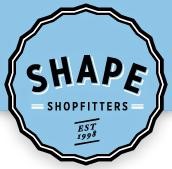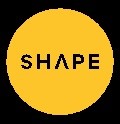In the recent case of Shape Shopfitters Pty Ltd v Shape Australia Pty Ltd (No 3) [2017] FCA 865, the Federal Court of Australia considered whether certain marks that included the word “SHAPE” were deceptively similar:
Applicant’s registered mark

Respondent’s marks
![]()
Although a large proportion of the decision focused on whether there had been breaches of the Australian Consumer Law for misleading and deceptive conduct and passing off, there was also a claim for trade mark infringement (although somewhat surprisingly this claim was a relatively late addition).
The facts of the case were as follows: both parties were in the business of the commercial construction industry, engaging in the fit-out and refurbishment of third party premises, although the exact spheres of trading activity and any real / perceived overlap was a central factual issue in the proceeding. The Applicant, Shape Shopfitters Pty Ltd is largely in the business of shopfitting for retail food outlets and quick service restaurants, and is the registered owner of trade mark registration no. 1731525 for the SHAPE SHOPFITTERS logo (depicted above) (Shape Shopfitters Mark). The Shape Shopfitters Mark was registered on 30 October 2015 in class 37 for shopfitting, construction and advisory services relating to construction (amongst other services).
There was no dispute that the Respondent, Shape Australia Pty Ltd, was the larger business, operating on a materially greater scale that the applicant, predominantly for large scale fit-outs and refurbishments for office buildings, hotels, universities, banks, health care facilities and casinos.
The applicant’s infringement case centred on its rights with respect to its Shape Shopfitters Mark and the common word element “SHAPE” as well as the circle element present in both marks. Interestingly, at the outset of the Court’s decision, the Court specifically called out the difficulty with referring to the parties’ corporate names, noting that it “runs the risk of unwittingly intruding into some of the very issues of the case”.
In summary:
- The Court rejected the applicant’s argument that the respondent’s use of the name “SHAPE” in relation to its business activities (which the applicant argued materially overlapped with the applicant’s services) would mislead or deceive consumer into erroneously believing that there was a commercial connection between the parties. The Court held that given the parties would engage with clients over a long period of time, and often repetitively, and therefore would not be misled into believing the parties were connected or related.
- Further the Court accepted the respondent’s evidence that there were a number of other entities using the word “Shape” in their corporate names. The Court found that this also weighed against any linear proposition that the applicant was related to the respondent, because such industry specialists would have likely come across these other unrelated entities using the word “shape”. Mortimer J later referred to her concern that “to accept the applicant’s case under s 18 would be approaching an acceptance that the applicant has a statutory monopoly in the word “shape”, an otherwise ordinary English word”.
- As regards the trade mark infringement claim, the applicant unsuccessfully argued that the “essential eye-catching and memorable feature” of the Shape Shopfitters Mark was the word “SHAPE”. The Court instead found that although the word “SHAPE” was likely to be recalled, that an “industry specialist’s eye” would also be drawn to the word “Shopfitters”. The Court further held that because of the alliterative effect between the two words, “Shopfitters” would be recalled in conjunction with “SHAPE” (i.e. the mark would be recalled as the phrase “SHAPE Shopfitters”, and not just “SHAPE”).
- In addition, the Court held that the “bottle cap” border was a distinctive element of the Shape Shopfitters Mark and even if an industry participant of ordinary intelligence and memory, may imperfectly recall the precise pattern of the border, such person would recall that the Shape Shopfitters Mark had a circle which was not a smooth circle.
Finally, and interestingly, there was some debate between the parties about the correct operation of s 70(3) of the Trade Marks Act 1995 (Cth), which provides that “to the extent that a trade mark is registered without limitations as to colour, it is taken to be registered for all colours”. This was on the basis that the Shape Shopfitters Mark was recorded on the Trade Mark Register in colour, but was not registered subject to any endorsement as to colour. The Court noted that it did not need to express an opinion on this issue given its finding that the marks were not deceptively similar, though tantalizingly noted that “There are some significant issues of statutory construction involved in determining that question, which do not previously appear to have been decided”
Take home points
It is interesting to take stock, as a number of controversial relative grounds decisions have been handed down in Australia recently.
The Full Federal Court’s decision in Pham Global Pty Ltd v Insight Clinical Imaging Pty Ltd [2017] FCAFC 83 early this year held that the following two marks were substantially identical (this is generally regarded as a higher threshold test than that for deceptive similarity):


Contrast that with the finding that the respective marks below are not deceptively similar. There was no claim made in the proceedings that the marks below were substantially identical.



Of course, these cases will come down to their specific facts. Shape Shopfitters may have been better served relying on a word mark registration for SHAPE, and indeed has applied to register that mark. That application was accepted, but has been opposed by … you guessed it, Shape Australia.
This serves as a timely reminder of the limitations of logo registrations. However, one can feel a bit of sympathy for Shape Shopfitters given that the rationale for filing for logos is to provide a measure of protection against look-alike marks that may not necessarily infringe a word mark registration.





